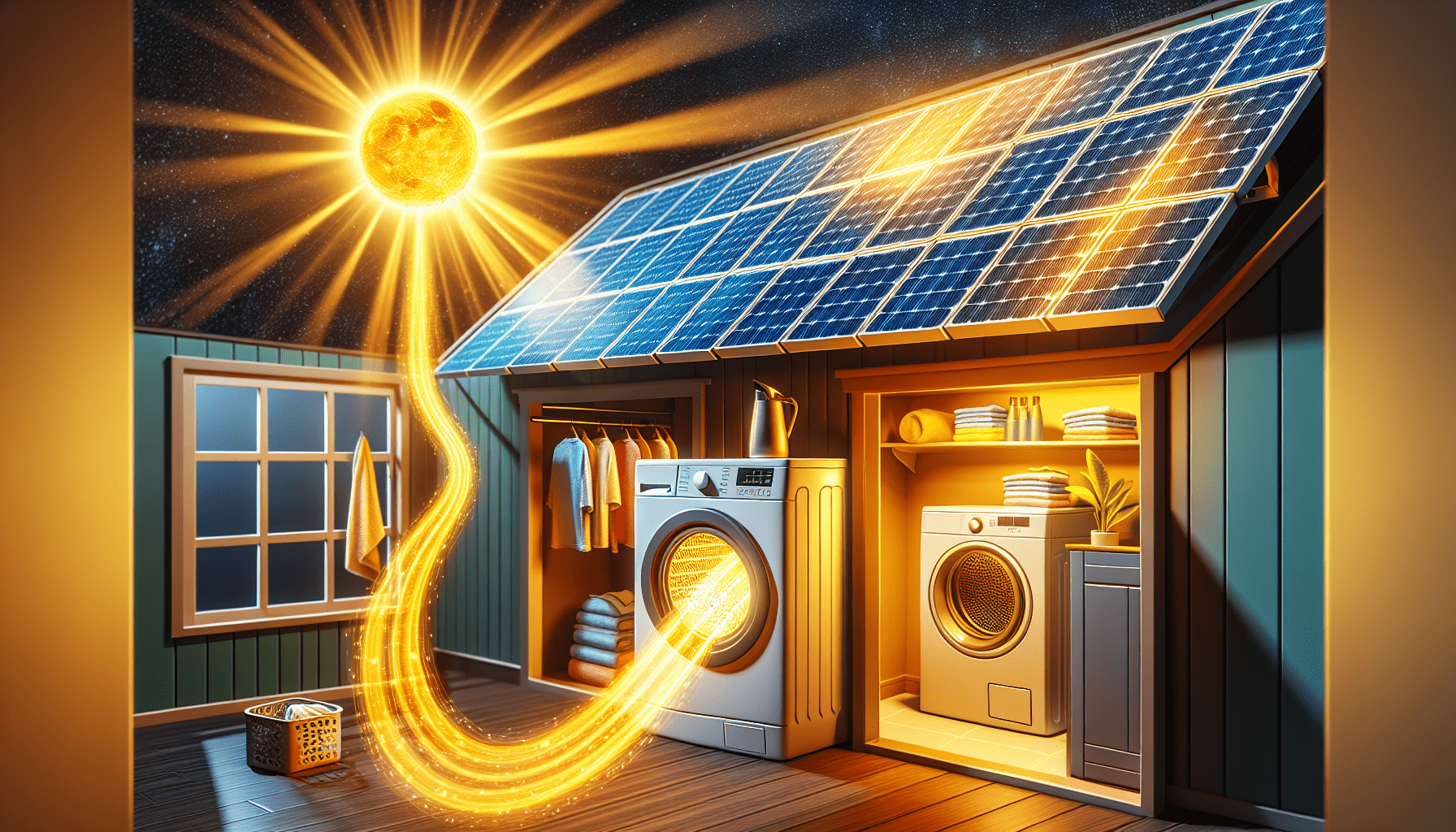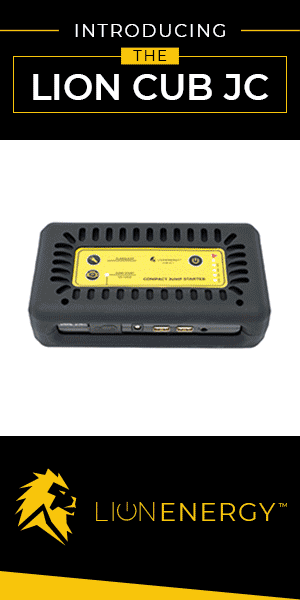Discover how many solar panels are required to power a clothes dryer. Learn about factors such as energy consumption, panel efficiency, and output calculation. Considerations for reliable operation, sizing, and installation, as well as cost and eco-friendly benefits.
Introduction
Imagine never having to worry about your electricity bills again, while also doing your part to protect the environment.
If you’ve ever thought about switching to solar power, one question that may have crossed your mind is: How many solar panels does it take to run a clothes dryer?
In this article, we’ll uncover the answer to this intriguing question and explore the possibilities of harnessing the power of the sun to dry your clothes in the most sustainable way possible.
So put on your eco-friendly thinking cap, and let’s embark on this solar-powered journey together!
Factors to Consider
Energy Consumption of Clothes Dryer
When considering the number of solar panels needed to run a clothes dryer, it is crucial to evaluate the energy consumption of the dryer itself. Different models and brands have varying power consumption levels.
To determine the energy consumption, you can refer to the dryer’s specifications or look for the wattage rating on the appliance label.
Efficiency of Solar Panels
The efficiency of solar panels is another crucial aspect to consider. Solar panels convert sunlight into electricity, and their efficiency determines how much electricity they can produce.
Higher efficiency panels will generate more electricity per square meter compared to lower efficiency ones.
Evaluating the efficiency of solar panels helps determine the number of panels needed to meet the energy requirements of a clothes dryer.
Average Solar Panel Output
Understanding the average output of a solar panel is essential to determining its capability in generate electricity. The average output of solar panels is measured in watts.
This figure represents the maximum amount of power that the solar panel can produce under ideal conditions.
Knowing the average output per panel allows you to calculate the number of panels required to meet the energy needs of your clothes dryer.
Calculating Energy Requirement
Determining Clothes Dryer Power Consumption
To determine the power consumption of your clothes dryer, you need to find the wattage rating of the appliance. This information is usually mentioned on the dryer itself or in the user manual.
If you cannot find the specific wattage rating, you can use a wattmeter to measure the power consumed when the dryer is in operation.
Determining Energy Requirement for a Clothes Dryer
Once you know the power consumption of your clothes dryer, you can calculate the energy requirement. Simply multiply the power consumption in watts by the number of hours the dryer is used per day.
This will give you the daily energy requirement measured in watt-hours (Wh) or kilowatt-hours (kWh).

Solar Panel Output Calculation
Estimating Solar Panel Output
The estimated solar panel output can be calculated by multiplying the average output per panel by the number of panels installed.
For instance, if each panel has an average output of 250 watts, and you have ten panels, the total panel output would be 2500 watts, or 2.5 kilowatts.
Factors Affecting Solar Panel Output
Several factors can affect the output of solar panels. These include the angle and orientation of the panels, shading from nearby objects, temperature, and the intensity of sunlight.
To maximize the overall panel output, it is crucial to consider these factors and design the installation accordingly.
Number of Solar Panels Needed
Matching Energy Requirement with Solar Panel Output
To determine the number of solar panels needed, you need to match the energy requirement for the clothes dryer with the calculated solar panel output.
If the daily energy requirement of the clothes dryer is 5 kilowatt-hours and each panel has an output of 2.5 kilowatts, then you would need a minimum of two panels to meet the energy needs.
Considering Backup and Storage
In addition to meeting the immediate energy requirement, it is advisable to consider backup and storage options.
This ensures a continuous supply of electricity even during periods of low sunlight or at night when the solar panels are not producing electricity.
Backup options can include battery storage systems or the grid as an alternative power source.
Calculating the total number of Solar Panels Required
To calculate the total number of solar panels required, you need to consider the energy requirement of the clothes dryer, the average output per panel, and any additional backup needs.
By matching the energy requirement with the solar panel output and factoring in backup options, you can determine the ideal number of solar panels for your setup.

Sizing and Installation
Panel Size and Capacity
When sizing your solar panel setup, it is essential to consider the panel size and capacity.
Different panel sizes are available on the market, and the size you choose will depend on factors such as available space, energy requirements, and budget.
It’s important to ensure that the panel capacity is sufficient to meet your clothes dryer’s energy needs.
Placement and Orientation
The placement and orientation of solar panels have a significant impact on their overall performance.
For optimal efficiency, solar panels should be installed in a location with maximum sunlight exposure throughout the day.
South-facing roofs are typically ideal in the northern hemisphere, while north-facing roofs are preferable in the southern hemisphere.
Wiring and Inverter
Proper wiring and the right choice of inverters are crucial for a functional solar panel system.
The DC (direct current) electricity produced by the solar panels needs to be converted into AC (alternating current) electricity to be used by household appliances.
Inverters facilitate this conversion and play a crucial role in the efficiency and reliability of the system.
Considerations for Reliable Operation
Weather and Climate
The weather and climate of your location can impact the performance and reliability of your solar panel setup. Regions with ample sunlight throughout the year are ideal for maximizing solar panel output.
However, it is essential to consider factors such as extreme temperatures, wind loads, and potential for hail or other natural hazards that may affect the longevity and functionality of the panels.
Maintenance and Cleaning
To ensure the continued efficiency of your solar panel system, regular maintenance and cleaning are necessary. Dust, debris, and dirt accumulation can reduce the panel’s ability to capture sunlight.
Cleaning the panels periodically and removing any obstructions can help maintain optimal performance and extend the lifespan of your solar panels.
Inverter Capacity and Efficiency
The capacity and efficiency of the inverter used in your solar panel system are critical for reliable operation.
Inverters should have sufficient capacity to handle the maximum power output of the panels and should be chosen based on your specific needs.
Additionally, selecting inverters with high conversion efficiencies ensures that less energy is lost during the conversion process, resulting in improved overall system performance.
Cost and Affordability
Solar Panel Costs
The cost of solar panels can vary depending on several factors, including the panel type, brand, efficiency, and installation requirements.
Generally, higher-efficiency panels tend to be more expensive. It is essential to consider the upfront costs of purchasing and installing the panels when evaluating the affordability of the system.
Additional Equipment and Installation Costs
Alongside the solar panels, there may be additional equipment and installation costs to consider. This can include inverters, wiring, mounting brackets, monitoring systems, and any necessary permits or inspections.
Factoring in these costs provides a more accurate assessment of the overall investment required for a functional solar panel system.
Evaluating Cost-effectiveness
When evaluating the cost-effectiveness of a solar panel setup for running a clothes dryer, it is important to consider the long-term savings.
Although the upfront investment may be higher compared to traditional electricity sources, the potential savings on monthly utility bills can make solar panels a cost-effective option in the long run.
Eco-friendly Benefits
Reduced Carbon Footprint
One of the significant environmental benefits of using solar panels is the reduction in carbon footprint. Solar energy is a renewable source of electricity that does not produce harmful greenhouse gas emissions like fossil fuels.
By powering your clothes dryer with solar panels, you reduce reliance on traditional electricity sources, thus contributing to a cleaner and greener environment.
Renewable Energy Contribution
Using solar panels to power your clothes dryer allows you to actively contribute to the generation of renewable energy.
Solar energy is clean, sustainable, and abundant. By harnessing the power of the sun, you become part of a larger movement towards a more environmentally friendly energy future.
Other Household Energy Consumption
Assessing Total Energy Needs
In addition to the energy requirements of a clothes dryer, it is important to assess the overall energy needs of your household.
By considering the energy consumption of all your appliances and electronics, you can calculate the total energy requirements.
This information will assist in determining the appropriate number of solar panels needed to meet your household’s energy demands.
Calculating Solar Panel Requirements for Other Appliances
Once you have assessed the total energy needs of your household, you can allocate the necessary solar panel capacity to power other appliances as well.
By calculating the energy consumption of each appliance and factoring in their usage patterns, you can size your solar panel system accordingly.
Conclusion
When determining the number of solar panels needed to power a clothes dryer, various factors must be considered.
These factors include the energy consumption of the dryer, the efficiency of the solar panels, and the average solar panel output.
By accurately calculating the energy requirement for the dryer and matching it with the panel output, you can determine the appropriate number of panels needed.
Proper sizing, installation, and maintenance of the solar panel system ensure reliable and cost-effective operation.
Ultimately, harnessing solar energy not only reduces your carbon footprint but also contributes to a more sustainable and eco-friendly future.

